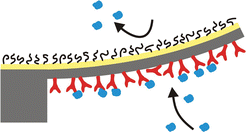This review will provide a general introduction to the field of cantilever biosensors by discussing the basic principles and the basic technical background necessary to understand and evaluate this class of sensors. Microfabricated cantilever sensors respond to changes in their environment or changes on their surface with a mechanical bending in the order of nanometers which can easily be detected. They are able to detect pH and temperature changes, the formation of self-assembled monolayers, DNA hybridization, antibody–antigen interactions, or the adsorption of bacteria. The review will focus on the surface stress mode of microfabricated cantilever arrays and their application as biosensors in molecular life science. A general background on biosensors, an overview of the different modes of operation of cantilever sensors and some details on sensor functionalization will be given. Finally, key experiments and current theoretical efforts to describe the surface stress mode of cantilever sensors will be discussed.

You have access to this article
 Please wait while we load your content...
Something went wrong. Try again?
Please wait while we load your content...
Something went wrong. Try again?


 Please wait while we load your content...
Please wait while we load your content...